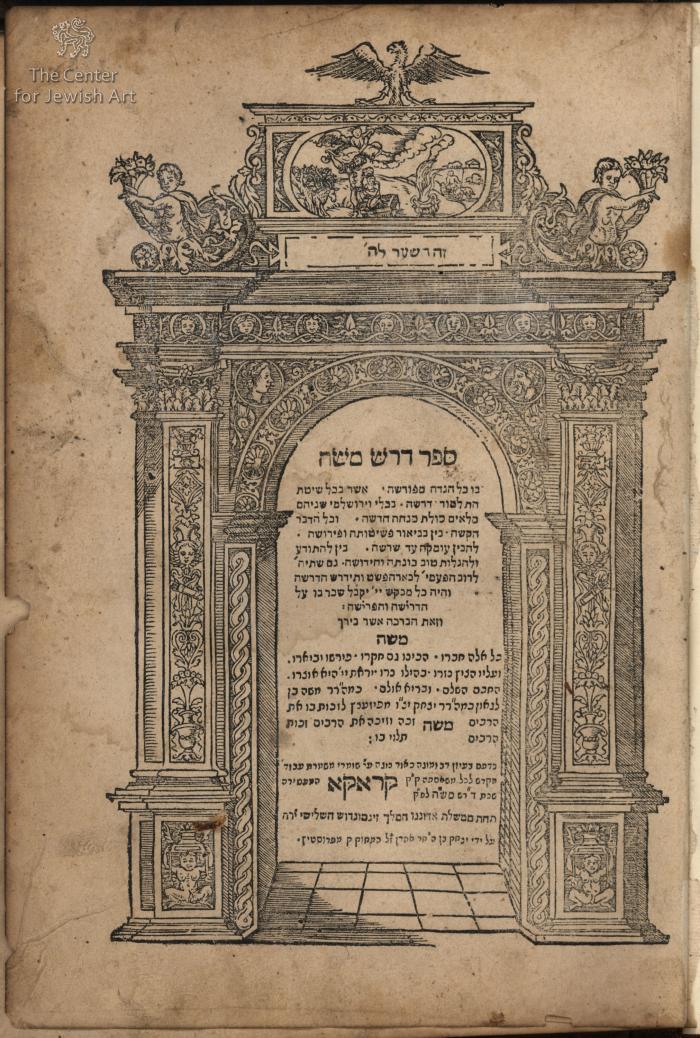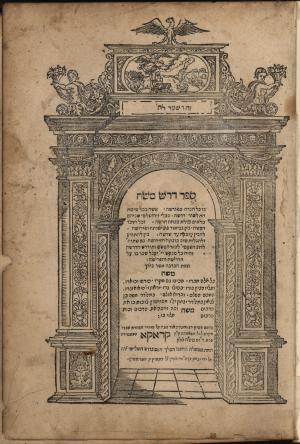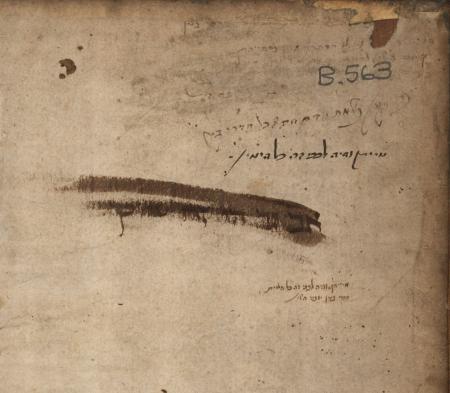Obj. ID: 36106
Jewish printed books Darash Moshe, Cracow, 1589

This text was prepared by William Gross:
On the aggadah by R. Moses ben Isaac of Pizenze, in Moravia. In this work, R. Moses seeks to explain the contents of all the aggadot, in contrast to previous writings, which address only a portion of them. He explains both the simple meaning of the aggadah and the novellae on it, according to the understanding of the sages, and is opposed to philosophical interpretations. The text is presented in two columns: the Talmudic text in square letters, the commentary in rabbinic type.
Title page with architectural frame topped by an illustration of the Akedah. It is a rare title page that has appeared in several cities that were home to Hebrew printing presses. In this instance it appears in the early printings of Prostitz of Cracow.




